The gateway to selecting for nutrient efficient livestock - Better Doers
| Project start date: | 03 September 2021 |
| Project end date: | 29 June 2021 |
| Project status: | Completed |
| Livestock species: | Grain-fed Cattle, Grass-fed Cattle, Sheep, Goat |
| Relevant regions: | National |
|
Download Report
|
|
Summary
In the commercial ruminant production situation when feed is limited, some animals are better able to maintain condition and productive capacity. These animals are often called ‘better doers’. In the extensive grazing systems across northern Australia, the issue of low efficiency manifests largely as poor resilience and loss of muscle mass in the dry season when forage quality and quantity is low.
This project quantified the potential gains in productivity by sampling a population of sheep with different residual feed intake, methane emission and quantify differences in key rumen wall proteins involved in nutrient uptake and energy capture from these animals.
Through a series of investigations, this project identified main processes and metabolic pathways involved in nutrient absorption in sheep rumen with phenotypic variation in residual feed intake (RFI) and methane emission. These processes impact on the net energy absorbed in this part of the digestive tract which in turn effects how efficiently the animal can use the metabolizable energy from the diet and retain it in the body.
Objectives
The primary objective was to develop one or more tests to identify ‘better doers’ for use to improve management strategies for producers and in selection and breeding experiments.
Key findings
Overall the findings highlight the rumen epithelium is well adapted to absorb a range of nutrients depending on those that are available. Therefore, ruminants can use a range of nutrients from different plant feed sources, giving producers flexibility to provide feed to ruminants.
A different pattern of protein biomarkers (abundance of enzymes) in metabolic pathways in the rumen epithelium was found in sheep fed 1.5 x energy required for maintenance in with L or H CH4 emission compared to that fed ad libitum the same diet with L or H RFI.
The range of nutrient transporter identified shows the rumen epithelium has the capacity to absorb a wide range of nutrients. Providing flexibility to producers to use different feed sources for nutrition beyond the concept they often rely on that ‘supplementary fed is only what is available’.
Benefits to industry
This project has generated information that may be applied by animal geneticists and nutritionists to select ruminant livestock with more efficient phenotypes. The end goat is to enable producers to benefit from better feed composition formulation, feeding strategies and breeding programs to produce ruminant livestock more cost effectively, with body composition desirable to match the production system, environment, as well as reduce impact on the environment through reduced methane emissions.
Future research
We found a member of the family of antimicrobial proteins ‘cathlecidins’ called Azurocidin 1 had greater abundance in the L CH4 epithelium. They can kill methanogens, are they secreted by other microbes in the rumen and if secreted by the rumen epithelium in granules could influence the host control of the low CH4 phenotype. This warrants further investigation for emission abatement in livestock.
More information
| Project manager: | Joe Gebbels |
| Contact email: | reports@mla.com.au |
| Primary researcher: | NSW Department of Primary Industries - Agriculture |


